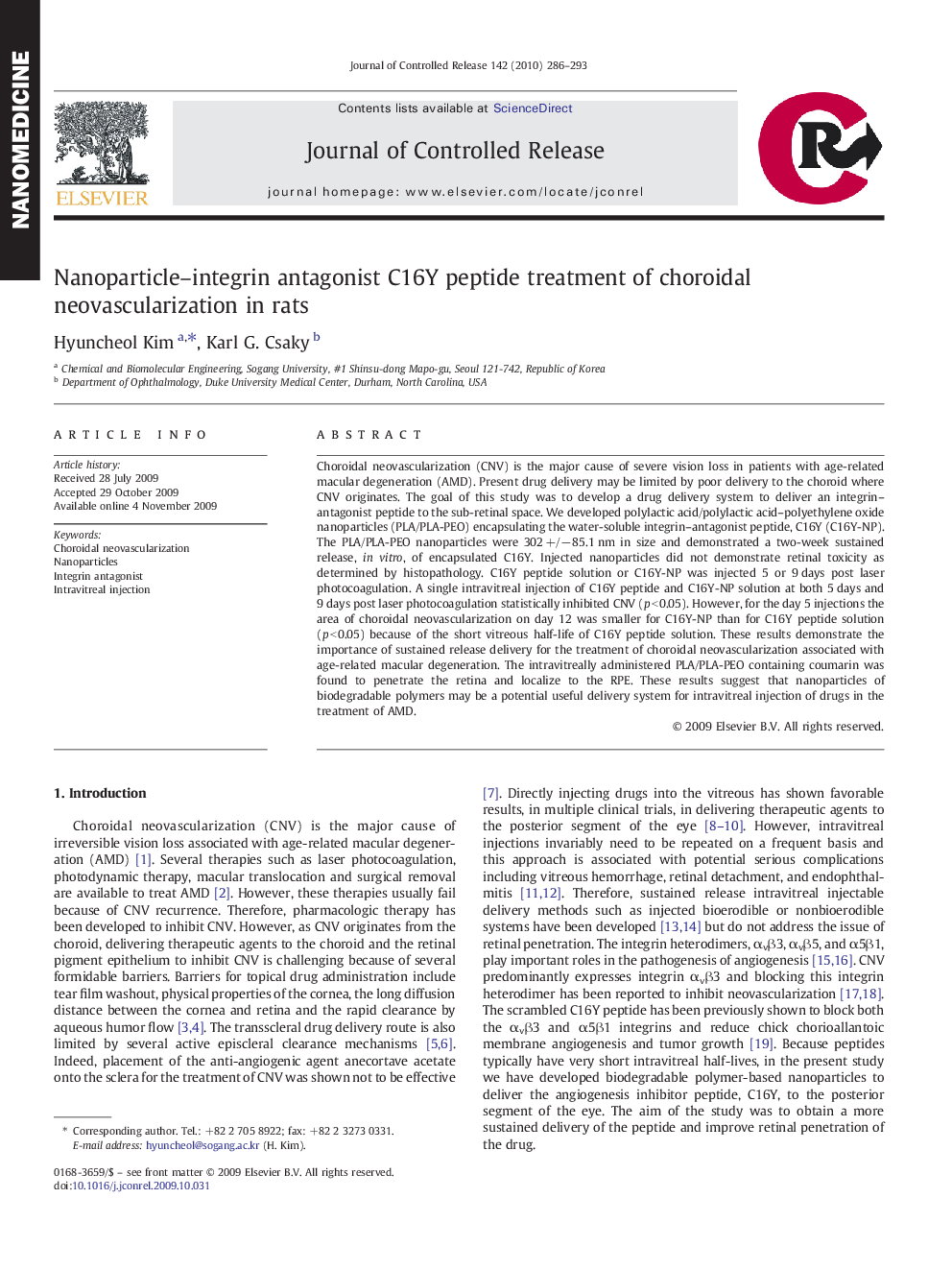| Article ID | Journal | Published Year | Pages | File Type |
|---|---|---|---|---|
| 1426001 | Journal of Controlled Release | 2010 | 8 Pages |
Choroidal neovascularization (CNV) is the major cause of severe vision loss in patients with age-related macular degeneration (AMD). Present drug delivery may be limited by poor delivery to the choroid where CNV originates. The goal of this study was to develop a drug delivery system to deliver an integrin–antagonist peptide to the sub-retinal space. We developed polylactic acid/polylactic acid–polyethylene oxide nanoparticles (PLA/PLA-PEO) encapsulating the water-soluble integrin–antagonist peptide, C16Y (C16Y-NP). The PLA/PLA-PEO nanoparticles were 302 +/− 85.1 nm in size and demonstrated a two-week sustained release, in vitro, of encapsulated C16Y. Injected nanoparticles did not demonstrate retinal toxicity as determined by histopathology. C16Y peptide solution or C16Y-NP was injected 5 or 9 days post laser photocoagulation. A single intravitreal injection of C16Y peptide and C16Y-NP solution at both 5 days and 9 days post laser photocoagulation statistically inhibited CNV (p < 0.05). However, for the day 5 injections the area of choroidal neovascularization on day 12 was smaller for C16Y-NP than for C16Y peptide solution (p < 0.05) because of the short vitreous half-life of C16Y peptide solution. These results demonstrate the importance of sustained release delivery for the treatment of choroidal neovascularization associated with age-related macular degeneration. The intravitreally administered PLA/PLA-PEO containing coumarin was found to penetrate the retina and localize to the RPE. These results suggest that nanoparticles of biodegradable polymers may be a potential useful delivery system for intravitreal injection of drugs in the treatment of AMD.
Graphical abstractA single intravitreal injection of C16Y peptide and C16Y-NP solution at 5 days post laser photocoagulation statistically inhibited CNV (p < 0.05). However, C16Y-NP solution on day 5 reduced the area of choroidal neovascularization more than the C16Y peptide solution on day 5 (p < 0.05) because of the short vitreous half-life of C16Y peptide solution. These results demonstrate the importance of sustained release delivery for the treatment of choroidal neovascularization associated with age-related macular degeneration.Figure optionsDownload full-size imageDownload as PowerPoint slide
